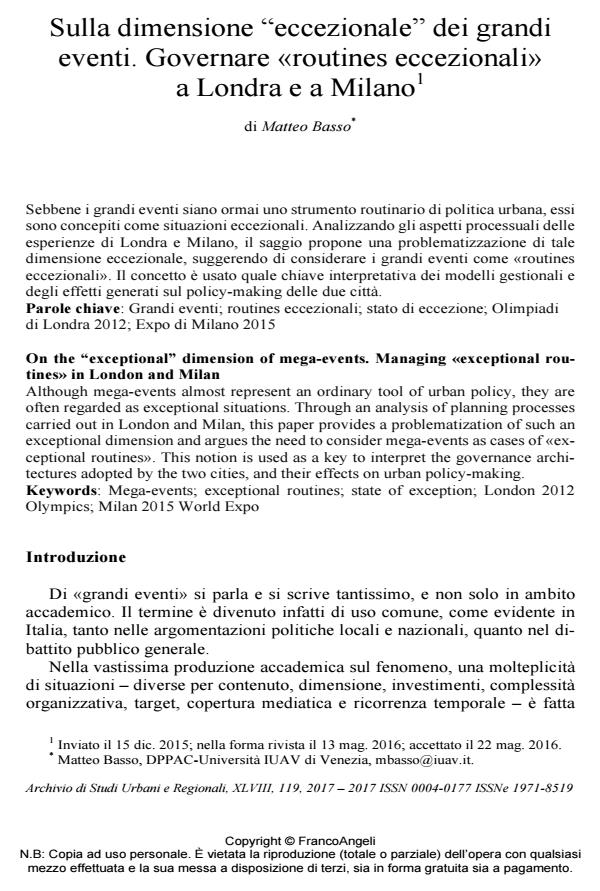Sulla dimensione "eccezionale" dei grandi eventi. Governare «routines eccezionali» a Londra e a Milano
Titolo Rivista ARCHIVIO DI STUDI URBANI E REGIONALI
Autori/Curatori Matteo Basso
Anno di pubblicazione 2017 Fascicolo 2017/119
Lingua Italiano Numero pagine 22 P. 97-118 Dimensione file 142 KB
DOI 10.3280/ASUR2017-119007
Il DOI è il codice a barre della proprietà intellettuale: per saperne di più
clicca qui
Qui sotto puoi vedere in anteprima la prima pagina di questo articolo.
Se questo articolo ti interessa, lo puoi acquistare (e scaricare in formato pdf) seguendo le facili indicazioni per acquistare il download credit. Acquista Download Credits per scaricare questo Articolo in formato PDF

FrancoAngeli è membro della Publishers International Linking Association, Inc (PILA)associazione indipendente e non profit per facilitare (attraverso i servizi tecnologici implementati da CrossRef.org) l’accesso degli studiosi ai contenuti digitali nelle pubblicazioni professionali e scientifiche
Sebbene i grandi eventi siano ormai uno strumento routinario di politica urbana, essi sono concepiti come situazioni eccezionali. Analizzando gli aspetti processuali delle esperienze di Londra e Milano, il saggio propone una problematizzazione di tale dimensione eccezionale, suggerendo di considerare i grandi eventi come «routines eccezionali». Il concetto è usato quale chiave interpretativa dei modelli gestionali e degli effetti generati sul policy-making delle due città.
Parole chiave:Grandi eventi; routines eccezionali; stato di eccezione; Olimpiadi di Londra 2012; Expo di Milano 2015
- Re-tracing the rise of institutional investor landlords in London and Milan through the lens of state de-risking Emanuele Belotti, Alberto Bortolotti, Alessandro Coppola, Piero Corcillo, Marta Cordini, Stuart Hodkinson, Paul Watt, in European Urban and Regional Studies 09697764251384115/2025
DOI: 10.1177/09697764251384115
Matteo Basso, Sulla dimensione "eccezionale" dei grandi eventi. Governare «routines eccezionali» a Londra e a Milano in "ARCHIVIO DI STUDI URBANI E REGIONALI" 119/2017, pp 97-118, DOI: 10.3280/ASUR2017-119007